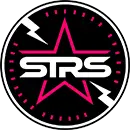Let’s start building our knowledge with the 3 main mic types: Dynamic, Condenser, and Ribbon.
Dynamic Microphones
Dynamic mics are made with a diaphragm suspended in a magnetic field. Sound waves vibrate the diaphragm and create AC voltage. These rugged workhorses get the job done and are well suited to high sound levels (SPLs), handheld vocal mics, and many other tasks. One of the downsides of certain dynamic mics is that they require a lot of gain from your preamplifier, so make sure your mic and amp play nice.
A good choice for a first dynamic mic is the Shure Sm57. This mic is a great choice for amps, snares, toms, and even vocals. Sm57’s are virtually indestructible, inexpensive, and versatile so most recording studios own a pair or more.
A standout mic in this category is the Shure Sm7B. Named very similar to the mic above, this more expensive microphone is bigger and comes with a built in mic clip and windscreen. This mic is stunning on speech, vocals, amps, bass, kick drum, etc. If you don’t have one of these in your collection I highly recommend you grab one when you get a chance. We’ve got 2 in constant use at Stellar Tracks Recording Studio.
Condenser Microphones
Condenser mics are made with a moveable metal plate and a fixed metal plate. The two plates are charged and, when sound hits the plates, the change in current between the two plates creates the “sound”. Phantom power is required to supply electricity to condenser mics so make sure you you have feature on your preamp before buying a condenser.
Due to their design, condenser mics capture the most nuance from sound sources. Nuanced vocals, acoustic guitar, and many types of hand percussion benefit from the detailed high end and transient response.
Condensers come in two main flavors: small and large diaphragm. Large condensers are popular for voice and small diaphragm condensers popular for acoustic guitar. We’ll cover some standard mic choices later in this blog series.
A good first condenser is the Audio Technica AT2020. Famed for its excellent sound by experienced engineers, is an inexpensive way to get started in the category.
A standout mic in the condenser category is the Neumann TLM 103. This semi-famous, semi-expensive vocal mic is based on the high priced ultra-famous Neumann U87. If you do your research, there are now many mics based on famous, expensive microphones of the golden era that can be had at less than vintage mic collector prices. It pays to research and test out mics when you plan on spending a good amount.
Ribbon Microphones
Ribbon mics are built and function similarly to dynamics mics but due to a thin aluminum ribbon they sound different. Great ribbon offer very natural sound reproduction and their frequency range mimics human hearing. Ribbon mics are more delicate and are therefore mostly used in recording studios where their awesome sound quality can be captured without damaging the mic.
A good first ribbon mic is the Beyerdynamic M160 which can high sound levels well. Also, they aren’t super heavy like the next mic I recommend so you can use normal mic stands. They aren’t cheap but after securing a few good dynamic and condenser mics, these ribbon mic can add new sonics to your recording palette.
A standout mic in the ribbon category is the Coles 4038, commonly bought in a pair for stereo or overhead drum placements. These heavy mics are super famous for exquisite sound, but you’ll need to make sure you have extremely stout mic stands to hold these babies up and a great signal path to enjoy all the nuance they impart.
